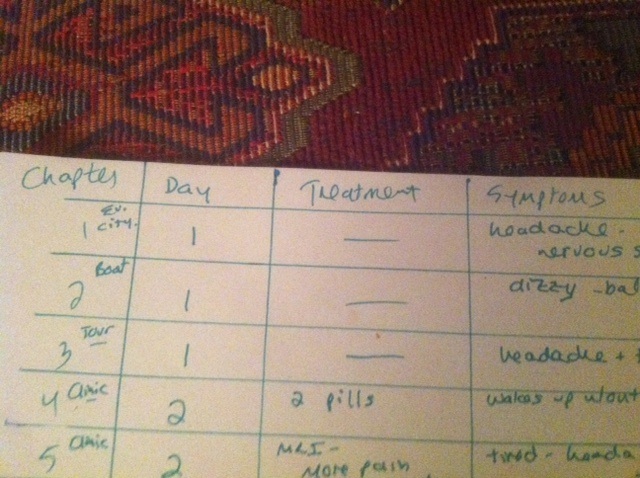Necessity is the mother of invention, right? I’m not sure who said that (I think Plato gets credit for it sometimes) but I’ve found that the saying is true when it comes to revising a book. So often, I’ll get to a stage in the revision process when I know I need to try a different strategy. But deep as my revision toolbox may be, I can’t always find the right thing. Sometimes, writers need to invent the tools they need to figure things out.
Which brings me to the Timeline-Treatment-Symptom-Belief-Emotion chart…
Last week, I was finishing up revisions on WAKE UP MISSING, my fall 2013 MG science thriller with Walker Bloomsbury, and I realized that I needed to do one more pass to check on the progression of some elements of the story. The novel is about four kids with post-concussion syndome who leave home hoping for a medical miracle. But when they’re admitted to an elite neurology clinic at a former military base in the Everglades, things don’t seem quite right, and little by little, they learn that the clinic’s goals have evolved beyond curing head injuries. The book takes place over eight days, and I created the chart above to track the changes that take place from chapter to chapter and day to day. One thing that was important was making sure that the narrator’s concussion symptoms were consistent with her treatment.
On many levels, this book is about changes, so it was also important to make sure I understood how my main character’s beliefs changed and how her emotions evolved through the course of her experience.
Chapter by chapter, I read through my draft and filled in the chart. I noticed a lot of small things along the way, and I made a couple important discoveries, too . I kept a running list of changes to consider after I finished charting everything, and then I went back for one more revision pass.
This is messy stuff and probably doesn’t make much sense to you as a reader, but as a writer, I can step back and see the bigger picture here — just what’s happening, just where things are moving too quickly or not quickly enough, just where a shift in view doesn’t sit quite right, and that’s where the text needs work.
Because I am a revision geek at heart, this was a deeply satisfying process and — I’m just going to say it — really, really fun. But even if you don’t love revising, getting out the big paper and colored pens can help you see your story in a new way.
Sadly, I’ll probably use this particular revision tool just once in my writerly life. After all, how many books can an author really write that might make use of a timeline-treatment-symptom-belief-emotion chart? But the experience has reinforced one lesson for me — that every book demands new tools, and if they don’t already exist in your bag of tricks, you just may need to invent them.








What an insightful post! I’m thankful you took the time to share your thinking.
Happy revising,
Ruth